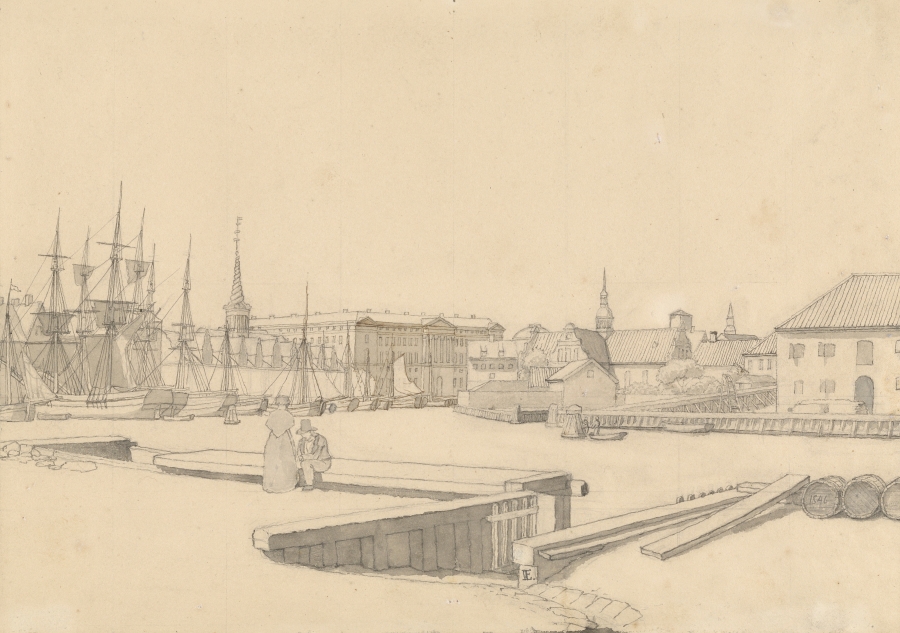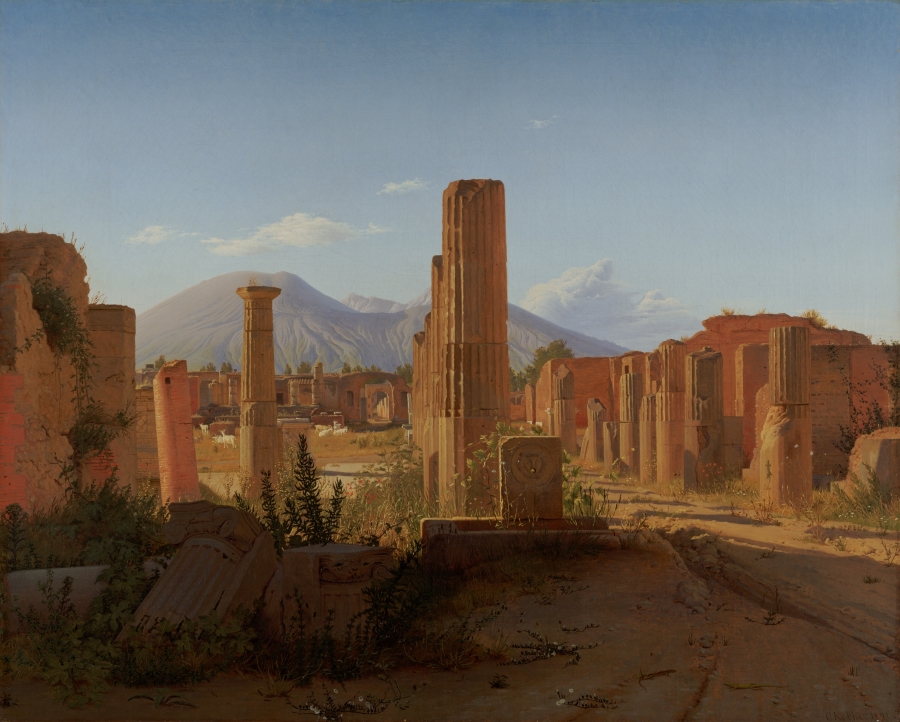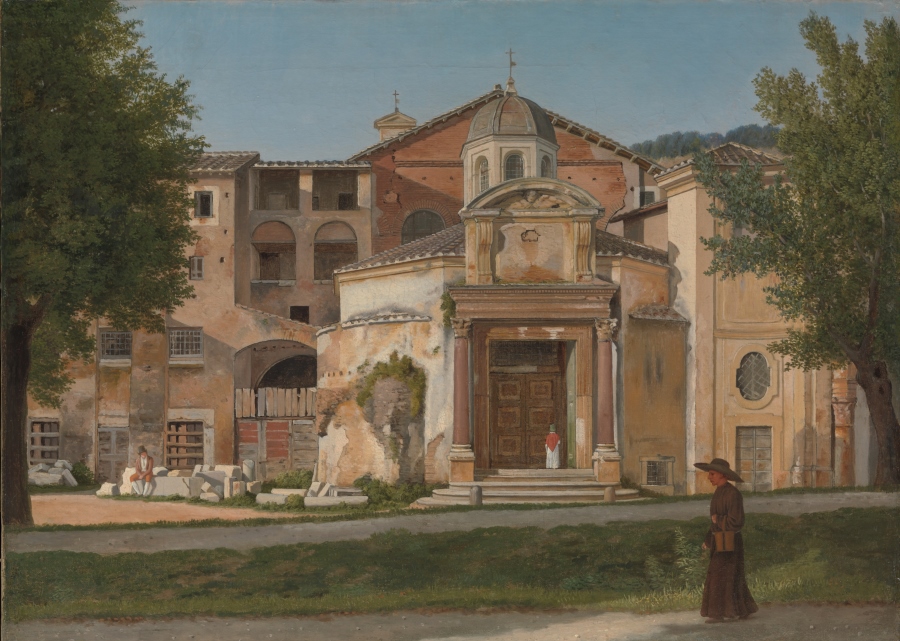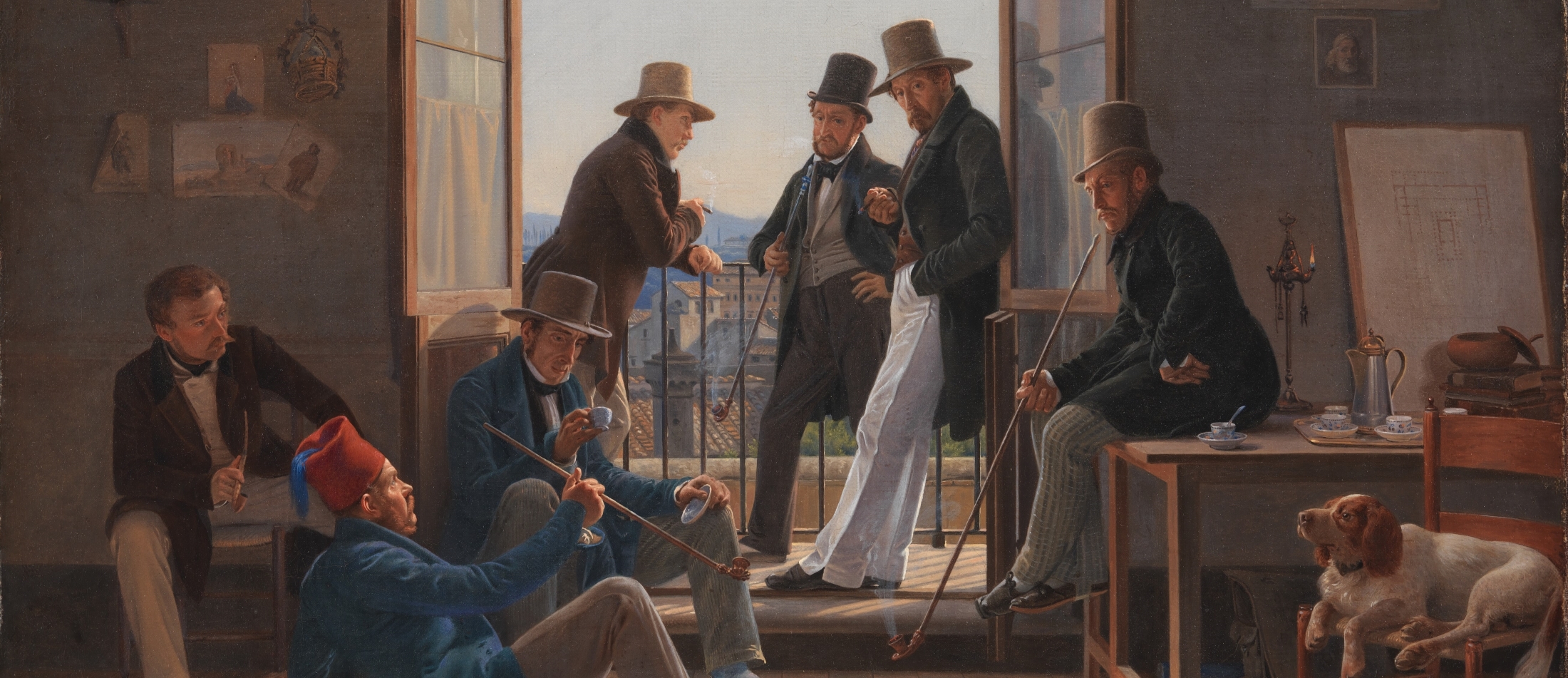
Beyond the Light: The MET explores 19th Century Danish Art
Isn’t it great when leading art museums organize small, curated exhibitions of a precise and specific time and place? To investigate the motivations of small groups of artists in a concrete nation and period expands and enriches our art history significantly. I personally believe that the XIX century is a total mine for this. This awkward “in between” century creates certain debate: Is it considered modern art? Or is it classic? For many years it has been classified more like a modern period of art, but as we progress in history to the next century, this art seems to give more of a classical vibe. Most of the attention in the art of the XIX century goes to France and the Netherlands, so we have a lot to investigate about this time in other areas of, not only Europe, but the whole world.
 Johan Christian Dahl - Copenhagen Harbor by Moonlight, 1846, Oil on canvas (95.9 x 154 cm) The Metropolitan Museum of Art, New York, Gift of Christen Sveaas, in celebration of the Museum's 150th Anniversary, 2019 © Metropolitan Museum of Art
Johan Christian Dahl - Copenhagen Harbor by Moonlight, 1846, Oil on canvas (95.9 x 154 cm) The Metropolitan Museum of Art, New York, Gift of Christen Sveaas, in celebration of the Museum's 150th Anniversary, 2019 © Metropolitan Museum of ArtThe Metropolitan Museum of New York has taken its step forward in these necessary investigations. The recently inaugurated exhibition called: Beyond the Light: Identity and Place in Nineteenth-Century Danish Art (January 26 – April 16), explores the Danish Golden Age through over 100 drawings, oil sketches, and paintings created by these artists firmly in this period, who witnessed the transformation of a once-powerful Danish kingdom into a small, somewhat marginalized country at the edge of Europe.
Christoffer Wilhelm Eckersberg (Danish, Blåkrog 1783–1853 Copenhagen) Photo 1 - View over the Holmenskanal to the Stock Exchange,Christianborg Palace, and the Church of Holmen,1846, Pen and black ink wash, pen and brown ink over black. chalk on wove paper (22.4 × 31.8 cm) The Morgan Library & Museum, New York, Bequest of Charles Ryskamp. Photo 2 - Anchors in a Copenhagen Square, 1838, Graphite, pen and black ink and brush and grey wash. Framed with brush and blue watercolor (20.1 × 20 cm), Statens Museum for Kunst © SMK Photo/Jakob Skou-Hanse.
The Met has collaborated with Gilbert and Ildiko Butler, the J. Paul Getty Museum, The Schiff Foundation and with SMK–The National Gallery of Denmark to make this possible.
Beyond the Light tells a powerful story about shifting borders, national identity, and feelings of belonging and displacement. All themes that resonate with contemporary audiences all over the world,
said Max Hollein, Director of The Met.
By focusing mainly on drawings and oil sketches of the period, the exhibition is the first to offer a history of 19th-century Denmark that is more personal and nuanced than the more official one often represented by finished paintings.
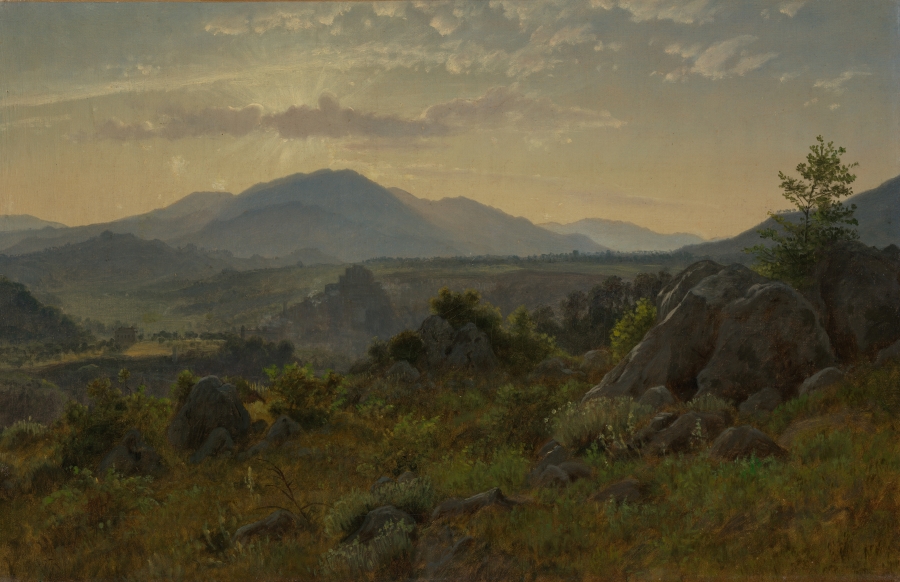 Peter Christian Thamsen Skovgaard (Danish,Ringsted 1817–1875 Copenhagen)Olevano, 1869, Oil on canvas (36.8 × 57.2 cm), Olson-Johnson Collection © Metropolitan Museum of Art, photo by Juan Trujillo
Peter Christian Thamsen Skovgaard (Danish,Ringsted 1817–1875 Copenhagen)Olevano, 1869, Oil on canvas (36.8 × 57.2 cm), Olson-Johnson Collection © Metropolitan Museum of Art, photo by Juan TrujilloDanish authors thought of their landscapes and their light as the best way to express and represent their nationalism. Denmark’s first art historian, the ardent nationalist Niels Laurits Høyen, believed that his country’s identity was tied to its distinctive landscape and material culture. They would study the natural causes that have led their land to look that way. Focusing on the water, the shores, the trees… but also how light is appreciated in facades, interiors, and urban streets. Their painting seizes the present moment in their beauty and calm joy, it brings peace and stillness to the observers.
 Johan Thomas Lundbye (Danish, Kalundborg 1818–1848 Bedsted), Self-Portrait, 1838–1848, Graphite on paper (17.2 × 11.1 cm), The Morgan Library and Museum, New York, Bequest of Charles Ryskamp
Johan Thomas Lundbye (Danish, Kalundborg 1818–1848 Bedsted), Self-Portrait, 1838–1848, Graphite on paper (17.2 × 11.1 cm), The Morgan Library and Museum, New York, Bequest of Charles RyskampAs mentioned before, the exhibition is more than just representing light and landscapes, it also focuses on the idea of identity. As Denmark’s borders diminished drastically and traditional power structures eroded, Danish artists contemplated their identity and how best to portray themselves and their fellow Danes. That’s why the exhibition includes interesting portraits of individual and groups of artists.
But of course, these artists like their contemporaries neighbors didn’t stayed in their homeland during their career. To understand better their history, they traveled to study the classical roots. So, they painted also in Germany, France, Italy, Greece, and Turkey. The Royal Danish Academy, where most 19th-century Danish artists trained, considered a journey abroad integral to an artist’s education. Moreover, the Academy paid and funded their entire formation. That’s why the project includes beautiful paintings from places like Greece and Italy in the last section of the exhibition.
Photo 1 -Christen Købke (Danish, Copenhagen 1810–1848) The Forum, Pompeii, with Vesuvius in the Distance,1841, Oil on canvas (70.8 × 87.9 cm), J. Paul Getty Museum, Digital image courtesy of the Getty's Open Content Program; Photo 2 - Christoffer Wilhelm Eckersberg (Danish, Blåkrog 1783–1853 Copenhagen) A Section of the Via Sacra, Rome (The Church of Saints Cosmas and Damian), Oil on canvas (31.4 x 43.5 cm), The Metropolitan Museum of Art, New York, Nineteenth-Century, Modern, and Contemporary Funds, 2012. © Metropolitan Museum of Art
After visiting this wonderful art show, my mind brings me to the first point of my article: There is so much out there to be discovered and explored! And there are many artists that remain in the shadows and are worthy to be brought to light and unveil their amazing works. Furthermore, these projects are an excellent way to try to understand other cultures, identity and inspirations in the different nations.
Credits for the Main photo: Constantin Hansen (Danish, Rome 1804–1880 Frederiksberg) A Group of Danish Artists in Rome, 1837, Oil on canvas (62 × 74 cm), Statens Museum for Kunst (KMS3236) © SMK Photo/Jakob Skou-Hansen

